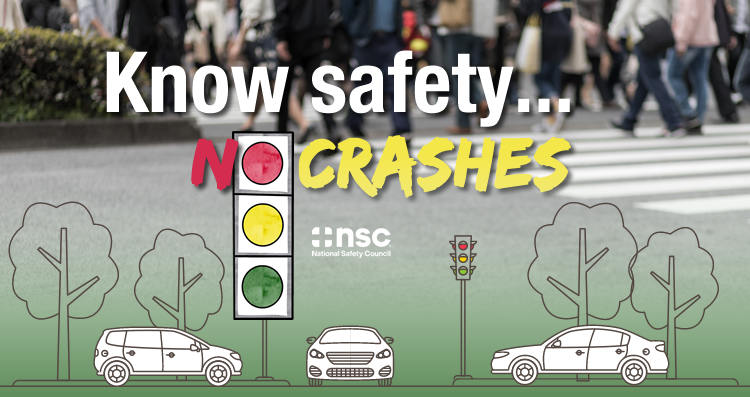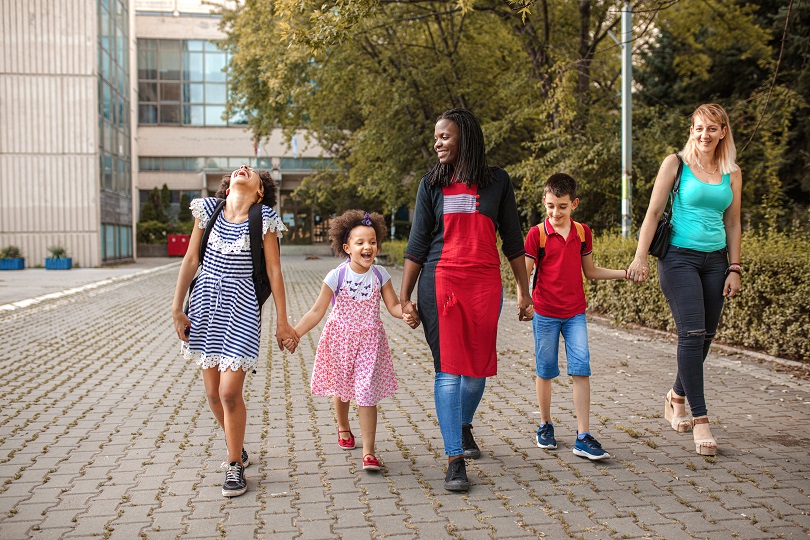U.S. Transportation Secretary Pete Buttigieg reminded us of the crisis we’re seeing on roadways across the U.S. when he announced the National Roadway Safety Strategy earlier this year. And, it truly is a crisis. In 2021, we lost an estimated 46,000 people in traffic crashes – the most in nearly two decades.
Among those losses is another devastating fact: Pedestrian fatalities are rising at an even more alarming rate. Pedestrian fatalities increased an estimated 17% in the first six months of 2021 over the same period in 2020.
As safety professionals, we need to act swiftly, decisively and in coordination to reverse this troubling trend and make sure all roadway users are safe.
From the Ground Up
Safety for people who walk and bike can start with some simple, effective changes to streets and sidewalks. A complete, safe and accessible sidewalk network should have:
- Good lighting: In 2018, 76% of pedestrian fatalities happened at night. Proper lighting on walking routes – and maintenance of those lights – is critical to improving safety. Detroit saw pedestrian fatalities go from 24 to one over a two-year period, in part because 65,000 faulty lights were replaced.
- Accessible accommodations: Routes and spaces to walk need to be accommodating to people of all abilities. This includes making sure curb cuts are properly spaced and maintained. Rain, sleet and ice can be hazardous for anyone, but especially for those using mobility-assisted devices. Slick sidewalks need to be treated and cleared.
- Properly designed crosswalks: Making sure interactions are safe between people walking and people using other modes of transportation might be the most important thing we can do. Make sure crosswalk timings are appropriate for all users and utilize all the proper signage and technology at your disposal.
We definitely don’t want to create an environment or narrative that suggests walking is a lesser form of transportation than others. It is the original form of transportation and deserves its place in transportation planning and support. Make sure that as you support safe walking you are not contributing to the myth of distracted walking or engaging in victim blaming. Remember, at some point in our day we are all pedestrians.
Get Creative and Have Fun
The pedestrian safety crisis is a serious issue, but that doesn’t mean we can’t get creative and have fun while addressing it. Improving pedestrian safety can be an opportunity to paint the town red – and blue, and green and yellow. Colorful streets have been shown to reduce car crashes involving people walking and biking by half.
Practices like a walking school bus – a group of children walking to school with one or more adults – are a great way for communities to come together, get some physical activity, and stay safe while walking. And, of course, mark those calendars for National Walk to School Day May 4. Many also will recognize May 4 as National Bike to School Day since May is Bicycle Safety Month.
Let’s Work Together
It’s going to take all of us to make sure every person makes it home safe at the end of the day. The Road to Zero Coalition has additional resources, recommendations and support to help you engage with other organizations committed to traffic safety, but you can get started today by getting a group together to conduct a walking audit in your neighborhood. Pedestrian safety can start with a single step!
– Heidi Simon is a senior program manager, mobility safety strategy, in the Roadway Practice at the National Safety Council



